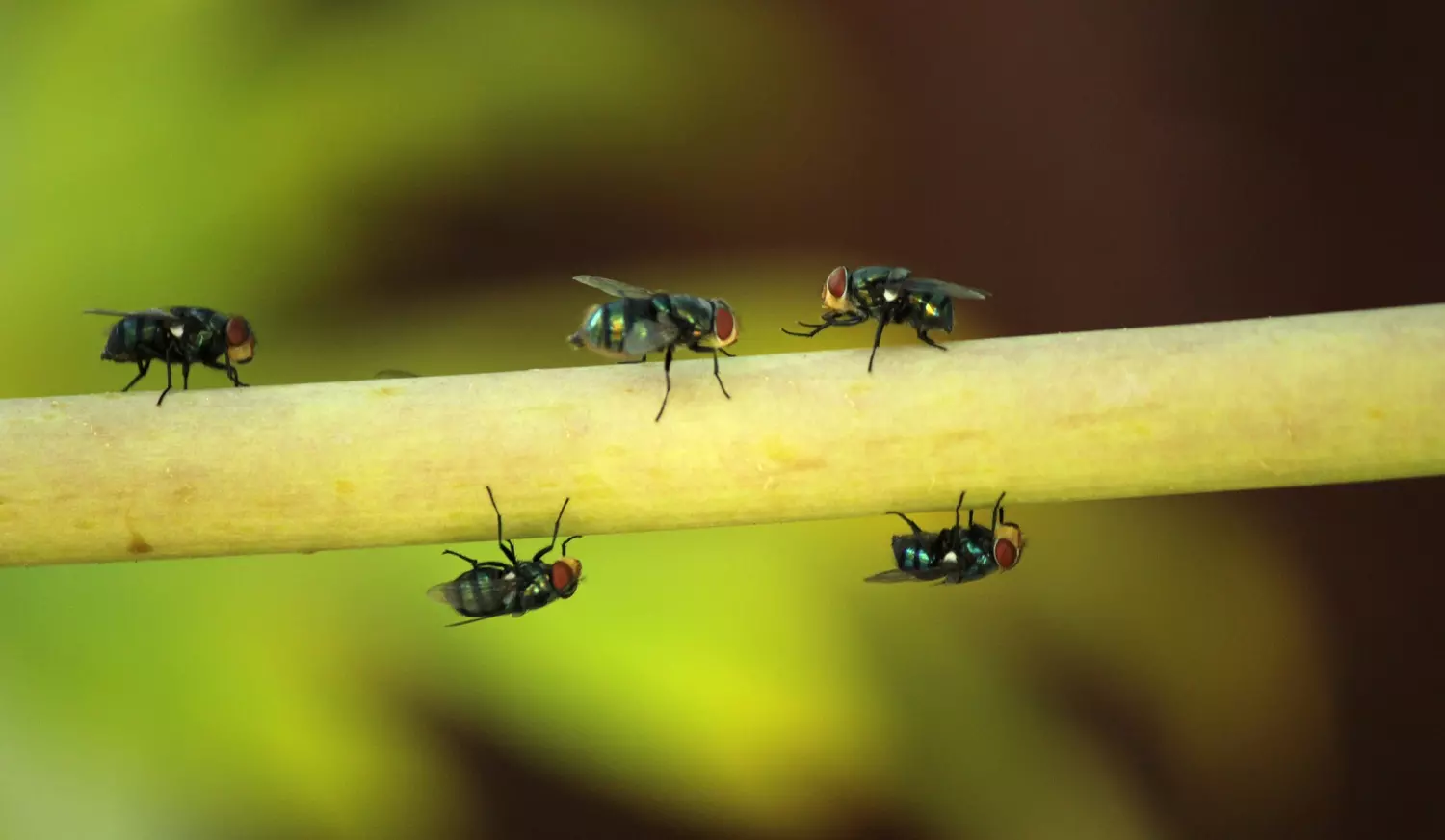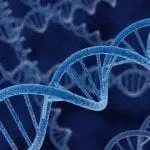[Originally published as the first section of Thank God for Flies]
Flies Spoil the Evolutionary Ointment
There is an accurate analogy between the real science of the fly insect and the abracadabra alchemy of evolutionism.
A fly in the ointment” is a King James Bible derived expression refers to “a small, unpleasant matter that spoils something” or “a drawback.”
Regarding evolutionism, the original Bible verse is much more accurate. “Dead flies cause the ointment of the apothecary [drugstore] to send forth a stinking savour [smell].” (Ecclesiastes 10:1a)
The ointment in this article is that used by evolutionists to attempt to cover the wound of their dogma. Evolutionists have set up a drugstore with lots of sweets and a good supply of narcotics, but it all stinks thanks to the forsaken fly.
Other Bible references to flies are altogether appropriate. “Let my people go, that they may serve me. Else, if thou wilt not let my people go, behold, I will send swarms of flies upon thee, and upon thy servants, and upon thy people, and into thy houses: and the houses of the Egyptians shall be full of swarms of flies, and also the ground whereon they are.” (Exodus 8:20-21) “And the LORD did so.” (Exodus 8:24a) “He sent divers sorts of flies among them, which devoured them.” (Psalm 78:45a)
Below are examples of why we should thank God for flies.
All Sorts of Flies
Beneficials in the Garden—Black Soldier Fly
Flies can be beneficial and necessary, aiding in controlling other insect pests, acting as pollinators, recyclers and scavengers, and they are also a part of the food chain. Remember only bees (and a few wasps) pollinate more plants than flies…What is of interest is that larvae are being used in manure management. Not only does the black soldier fly larva do its duty in manure reduction, but carries through as a feed supplement, and battles bravely in the war of pest fly control…
First off, manure management reduces environmental damage that can result from large accumulations of manure. Black soldier fly larvae are scavengers and thrive on many kinds of decomposing organic matter, including algae, carrion, compost heaps, manure, mold, plant refuse, and the waste products of beehives.
They have large and powerful chewing mouthparts allowing them to shred and devour waste. These gluttonous little creatures are able to digest organic compound before the compounds have time to decompose, thereby immediately eliminating odor.
The black soldier fly larva’s digestive system leaves behind a fraction of the original weight and volume of waste.
Statistically, food waste in the United States could be significantly reduced, and waste reduction of farm animals (chickens and pigs) might even reach 75%. Simply put, manure is rapidly decomposed by the black soldier fly larvae, greatly reducing the amount and odor, along with any potential disease problems.
Secondly, this non-pest larvae converts the manure’s nutrients into 42% protein and 35% fat feedstuff. This conversion of waste into feedstuff is called bioconversion and, consequently, the larvae can be fed right back to the animals or birds that generated the waste or used as feed for fish or livestock.
It can also be ground up and fed to earthworms or red worms for a second round or just used as compost. The larva is dry, friable, and odorless. In addition, many experts believe that the high calcium content of the larvae (also called “phoenix worms”) may halt or reverse the effects of metabolic bone disease. This biomass of larvae harvested nutrients is worth about the same as meat and bone or fishmeal.
It can be easily and economically transported, unlike unprofitable manure, and reduces the need to import concentrates that are added to other types of feed.
For more, see the report: https://aggie-horticulture.tamu.edu/galveston/beneficials/beneficial-51_black_soldier_fly.htm
A case study of using Black Soldier Flies to feed a circular economy
The US city of Charlotte is looking to black soldier fly larvae as a key part of its transition to a circular economy. One of five business cases developed by Metabolic for Envision Charlotte as part of the Circular Charlotte plan projected that if 50,000 tons of the city’s food waste is diverted to black soldier fly larvae production, this would reduce the amount of waste going to landfill by 5.3% and save the municipality $1.65 million in tipping fees, and prevent nearly 90,000 tons of CO2e emissions per year through diversion from landfill (where the food waste would have emitted methane).
An additional 7,000 tons of CO2e would be saved from the 6,800 tons of poultry feed that can be replaced by black soldier fly larvae. The replacement of poultry feed also saves about 41,000 gallons of water per year and 3,200 acres of land. In total, this could generate $200k – $2.5m in profits per year and create 150-250 new jobs in production, as well as an estimated 83 additional jobs created in food waste collection.
Source: https://www.metabolic.nl/news/devouring-waste-nourishing-the-world-how-insects-can-feed-a-circular-economy/
Housefly’s love of manure could lead to sustainable feed
An interdisciplinary team of Cornell researchers in animal science, entomology, nutritional sciences, business, microbiology and immunology is investigating a system for using housefly larvae to biodegrade manure and harvest the larvae for use as protein-rich animal feed. Their research is published in the Feb. 7 issue of the journal PLOS One.
Larva meal could address a pressing need to replace fishmeal in aquaculture. The massive demand for fishmeal to feed all kinds of livestock has led to overfishing of fish stocks worldwide. Larva feed is proving to be a sustainable alternative; it contains the right nutritional ingredients for feeding fish, poultry and other livestock. “I think feed from insects is the future of animal farming.”
From: https://phys.org/news/2017-03-housefly-manure-sustainable.html
Understanding the neurological code behind how flies fly
A common flesh fly takes off and maneuvers effortlessly, its head and body steadied by a hidden, miniscule gyroscope-like structure that gives it an unparalleled balance…
[The scientist’s] discoveries might someday help us build more responsive drones or better-balanced robots, said Jessica Fox, assistant professor of biology at Case Western Reserve and Yarger’s mentor on the project. Her lab has been studying the behavior of flies and how sensory systems process information since 2013.
Quoted from the report: https://www.sciencedaily.com/releases/2018/10/181012082704.htm
Karl’s comment: The following magical paragraph was also in the article: “Yarger studies the electrical activity of neurons in the haltere structure, which was once a second set of wings, but transformed by millions of years of evolution into what serves as the unseen balancing system.”
That is a nonsense non-scientific fabrication or hallucination. It could have been omitted without changing the scientific facts of this study. I provide facts to back up my statement in Helping Evolutionists Get It Right.
This fly’s incredible hearing is a curiosity to those developing better hearing aids
Ormia ochracea ‘s sense of directional hearing is second to none in the animal kingdom….”These flies have highly specialized ears that provide the most acute directional hearing of any animal,” says Andrew Mason, a professor of biology at U of T Scarborough.
“The mechanism that makes their hearing so exceptional has even led to a range of bio-inspired technology, like the mini directional microphones used in hearing aids.”…
While that is pretty extraordinary in itself, what makes the fly truly remarkable is its mechanically-coupled ears. Unlike most animals that have two separate ears, both of Ormia’s eardrums are connected together…
“It’s interesting that something so small can be sensitive to the direction of sound,” says Mason. “They’re tiny relative to the wavelength of sound they’re able to localize, so they shouldn’t be able to do what they do but they can because of the mechanical coupling.”
Engineers are interested in using the same principle found in Ormia’s coupled eardrums to develop artificial sensors. These sensors could better locate signals for a range of uses where the size of the object relative to the signal might be a limiting factor — from hearing aids, to gunshot detectors, to different types of radar.
From: https://www.sciencedaily.com/releases/2017/05/170515111136.htm
Jaw-Dropping Vision Helps Tiny Flies Snag Prey in Under a Second
The researchers say their findings could have technological applications, particularly in the development of flying drones. “The problem with drones is often one of the battery power necessary for accurate image processing,” Gonzalez-Bellido said in a statement. “The processing power is a huge drain on resources. But as is often the case, we can take lessons from the natural world to minimize the power requirements. This, combined with the robber fly’s remarkable hunting ability, could help in the design of drones designed to take down illegal drones near airports, for example.”
From: http://www.livescience.com/58192-amazing-vision-helps-tiny-flies-snag-prey.html







